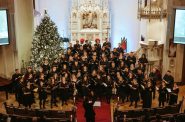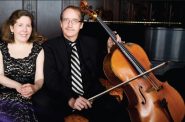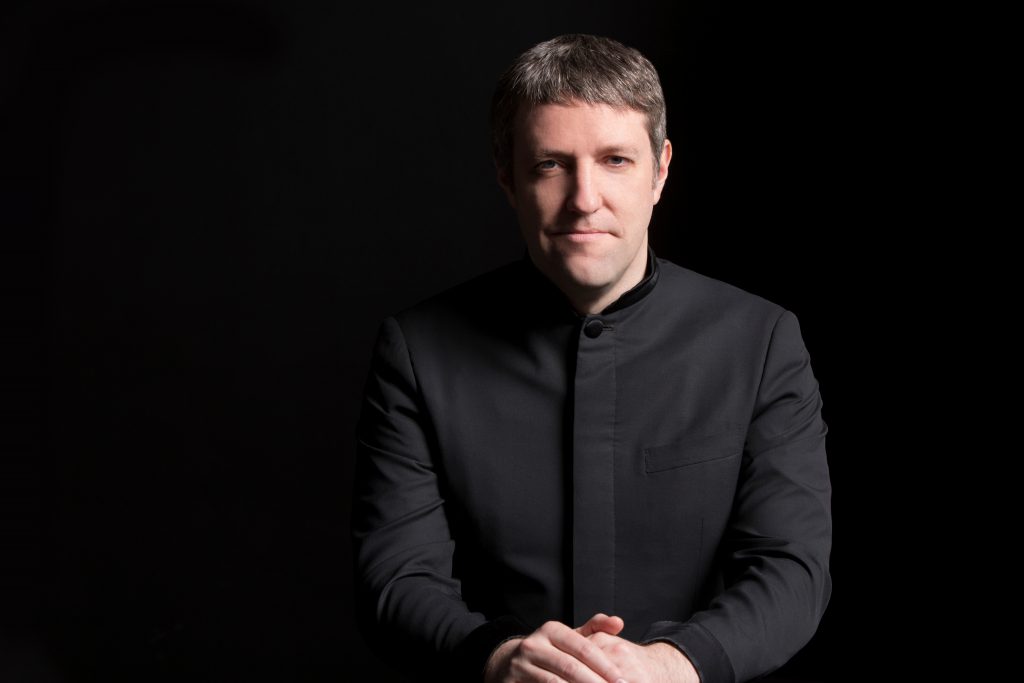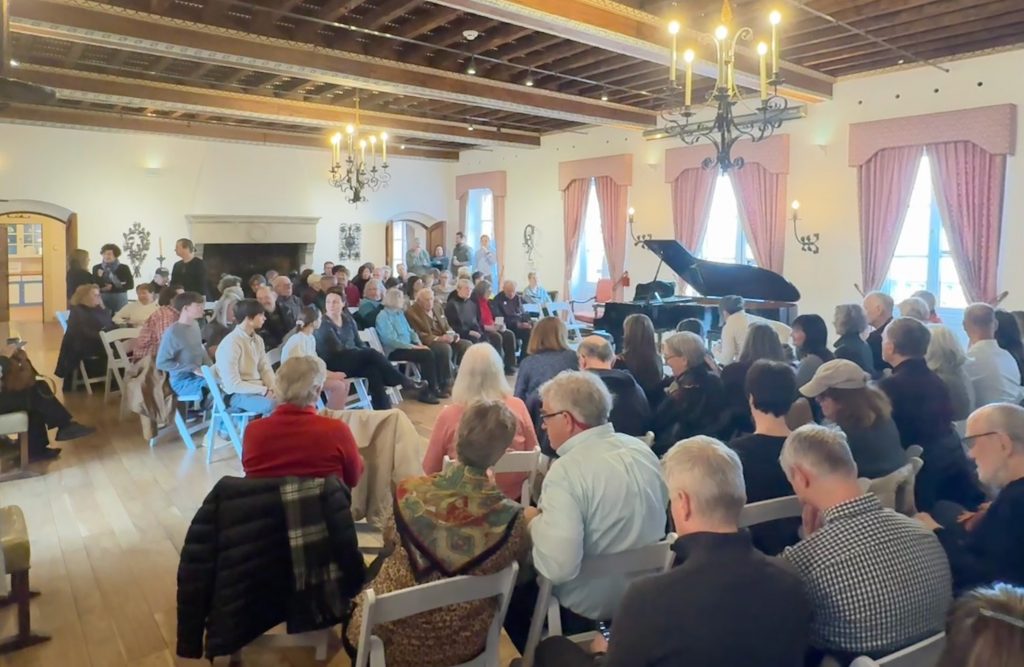A ‘World-Class’ Music Festival
Three-day Milwaukee Chamber Music Festival boasts top musicians, composers.
The second annual Milwaukee Chamber Music Festival will take place at the Villa Terrace Decorative Arts Museum this weekend, on July 25, 26, and 27. Festival curator and pianist Yaniv Dinur has crafted a program that celebrates both musical excellence and Milwaukee’s artistic community. Drawing exclusively from Milwaukee Symphony Orchestra musicians plus acclaimed vocalist Alisa Jordheim, the festival offers what Dinur describes as “a very local festival, but in terms of the quality of the performance — world class.”
Each evening of this summer festival centers around cornerstone works of the chamber music literature, with carefully chosen companions that illuminate musical relationships across centuries. Dinur recognized that this festival “gravitates toward the mainstream repertoire. It’s (almost) the only live classical music that you can find in the summer in Milwaukee. That’s mostly what people love to hear and what we love to play.”
Opening Night
The festival opens on Friday, July 25 with explosive energy in Paul Schoenfeld‘s Café Music, which Dinur characterizes as “a jazz trio that got out of control.” Performed by violinist Ilana Setapen, cellist Peter Thomas, and Dinur at the piano, this American composer’s fusion of classical and jazz elements provides the perfect festive opening.
The evening’s dual centerpieces showcase two quintets that share both a key signature and their status as “major cornerstones of the repertoire”— W. A. Mozart‘s beloved Clarinet Quintet and Anton Dvořák‘s Piano Quintet.
Dinur joins the strings for the Dvořák Piano Quintet, a work he describes with reverence: “It’s kind of on the same level with his ninth symphony. It’s kind of like an icon.” Completed in 1887, the work radiates what one contemporary critic called “prevailing optimism which, in the final two movements, intensifies to an expression of spontaneous joy.”
The Dvořák incorporates Czech folk elements, though Dinur notes an intriguing contrast with the composer’s other works: “It’s more refined, in a way, in the quintet. It’s like it was served in a five-star restaurant” compared to the rawer folk energy found in pieces like the Dumka Trio.
Beethoven’s Septet
Saturday’s, July 26 program explores the fascinating architecture of six-movement works, beginning with Ludwig van Beethoven‘s substantial Septet. The septet features an remarkable assembly of MSO players. Associate Concertmaster Kim. violinist Leung, violist Alejandro Duque, cellist Madeleine Kabat, and bassist Brittany Conrad represent a string quintet. They are joined by Principal Horn Matthew Annin, Principal Bassoon Catherine Van Handel and clarinetist Shankar.
The evening’s gem comes from Czech composer Bohuslav Martinů, whose Three Madrigals serves as a bridge between the earlier works and modern sensibilities. Though written by a 20th-century composer, “the three Madrigals suggest something ancient, but also the way he treats the music is looking forward to the future.” Dinur promises audiences a “wow piece” that, despite being “only written for two instruments,” creates the illusion of “a string orchestra when you listen to it.” The work’s synthesis of Czech folk elements with Renaissance madrigal techniques creates a unique musical language.
This work showcases the remarkable partnership between Kim and violist Alejandro Duque.
Closing Concert
The festival concludes on Sunday afternoon, July 27 with its most emotionally intense program, built around Robert Schumann‘s profound song cycle Dichterliebe, performed with vocalist Alisa Jordheim. She brings both local connections and international experience to this collaboration.
Jordheim, described as “vocally resplendent” by the San Francisco Chronicle and recently named among “40 under 40: A New Generation of Superb Opera Singers” by WQXR, represents the perfect choice for Schumann’s complex cycle. Her recent triumphs include roles as Violetta in La Traviata and Gilda in Rigoletto, where critics praised her “huge crystalline voice that she effortlessly pirouettes through perfect coloratura acrobatic and piercing high notes.”
What makes Dichterliebe particularly compelling is its unusual balance between voice and piano. “The piano part there is much more than just accompanying the singer,” Dinur explains. “It’s almost like when the singer is overwhelmed by emotion and can’t sing anymore because of that. The piano kind of takes over and completes what the words can’t express anymore.” This creates an intimate dialogue between Schumann’s exploration of “the inner world of the character” and Heinrich Heine‘s poetry.
The program reveals fascinating personal connections among its composers. Luise Adolpha Le Beau‘s Romance in G Major provides a lesser-known romantic gem that captured Dinur’s attention when Concertmaster Lee introduced him to the work. Le Beau, a student of Clara Schumann, composed the Romance in 1886. The single-movement work features alternating Andantino and Allegro sections that showcase both violin and piano as equal partners.
The program concludes with Johannes Brahms‘s Violin Sonata No. 3, providing a dramatically unconventional ending. Unlike most minor-key sonatas that resolve in major, this work “ends in minor,” as Dinur notes. “You think, okay, maybe until the last minute, maybe we have a chance, but no, it ends in minor.” The final movement, which Dinur calls his favorite, “has incredible energy. It’s very agitated and restless and exciting.” Dinur joins Milwaukee Symphony Concertmaster Jinwoo Lee for the Sonata.
Composed between 1886-1888 during Brahms’s artistic maturity, the sonata shares the “turbulent key of Beethoven’s monumental Ninth Symphony” while maintaining the composer’s characteristic formal sophistication. The work’s unusual four-movement structure and prominent development section—built over a 46-measure pedal point on A— create what critics describe as music “kaleidoscopic in its changing moods.”
Yet the emotional impact isn’t simply tragic: “It might be a victory,” Dinur observes. “But you still come out of it hurt. You know you’ve been through something.” When placed alongside the Le Beau Romance and the emotional journey of Dichterliebe, the Brahms creates a powerful conclusion that demonstrates the Sunday program’s theme of romantic intimacy and personal expression.
Presented in an intimate venue, the large living room of Villa Terrace, that brings performers and audience close together, the festival creates the rare opportunity to experience these masterworks in chamber music’s intended setting. While the space’s size means concerts will likely sell out, Dinur emphasizes accessibility through open rehearsals for students and families.
The festival offers audiences the opportunity to experience masterworks performed by musicians whose individual excellence and collaborative chemistry create something truly special: chamber music that speaks directly to the heart while engaging the mind with its sophisticated artistry.
The programs take place at the Italianate mansion and gardens, Villa Terrace, 2220 N. Terrace Ave., on Milwaukee’s East Side. The Friday and Saturday concerts begin at 7 p.m. The Sunday concert at 2 p.m. Details and tickets may be found at Mkechamberfest.com.

Existing members must be signed in to see the interactive map. Sign in.
If you think stories like this are important, become a member of Urban Milwaukee and help support real, independent journalism. Plus you get some cool added benefits.
Preview
-
A Sacred Choir, 70 Voices Strong
 Dec 14th, 2025 by Martha Brown
Dec 14th, 2025 by Martha Brown
-
Prometheus Trio Goes Bohemian
 Dec 3rd, 2025 by Martha Brown
Dec 3rd, 2025 by Martha Brown
-
Present Music Offers New Choral Works
 Nov 20th, 2025 by Michael Barndt
Nov 20th, 2025 by Michael Barndt






















